Length Discrepancies in The Toes and Arms
How are length discrepancies in the toes treated?
Length discrepancies in the toes generally refers to discrepancies of the metacarpal and metatarsal bones (the long bones in the hands and feet). Length discrepancies of the metatarsal bones leads to the toe bone protruding (sticking out) over the foot as well as shortening. There is difficulty with wearing shoes, and it creates pain as well as an unattractive appearance. Because of the pressure inside the shoe created by the toe discrepancy, bunions can occur. In addition, due to an uneven weight distribution on the soles of the feet, calluses and other walking disorders can also occur.
The patient in the first case experienced this condition in the 4th toe in the year 2000. In the second case, it is seen on the first toe (Morton's toe). It could have also been the result of a condition from birth which developed based on other factors. In cases in which it is congenital, it can be seen on both sides as well as in the hands. Later causes include trauma, infection, Freiburg's disease, radiation therapy, sickle cell anemia, epiphyseal dysplasia, rheumatoid arthritis, past foot operations, hormonal diseases (pseudohypoparathyroidism).
For treatment lengthening surgery is performed. If the discrepancy is less than 1 cm, acute lengthening (one time during surgery) is preferred, while for more significant cases, lengthening is done gradually (with the use of an external fixator). If the discrepancy is seen in more than one of the bones, which is very rare, lengthening some parts while shortening others may be preferred.
Depending on the treatment technique, problems that may arise during the lengthening process include: deformity, over- or under-lengthening, nonunion in the lengthened bone, protrusion in the toe, and stiffness in the toe joints.
How is it treated?
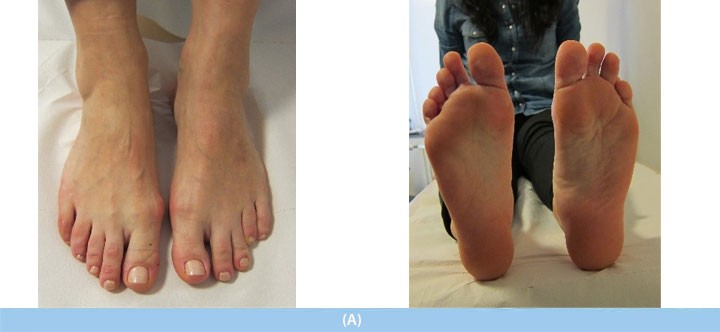
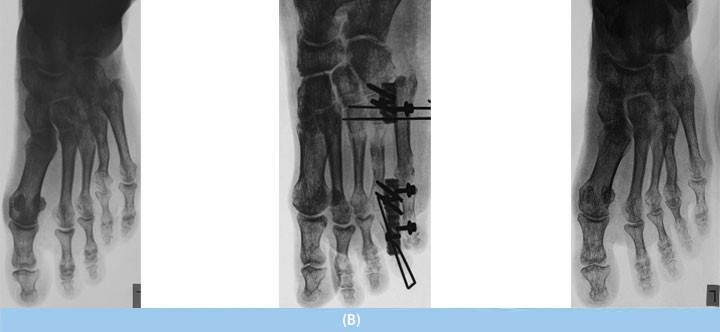
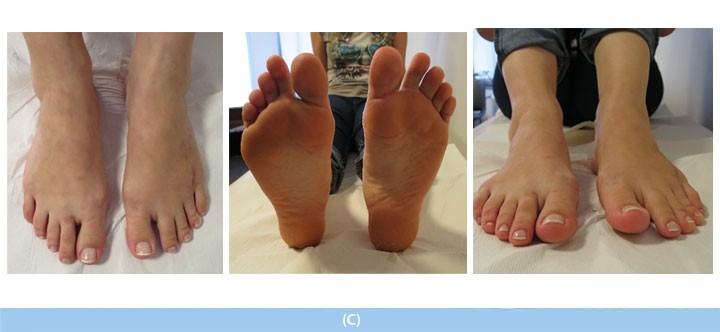
There was a length discrepancy in the 4th toe (age 45).
A) A year before, lengthening had been done at a different location, but the treatment had failed. There appears to be a length discrepancy in the 4th toe on the left foot.
B) During the treatment, X-rays were taken both during and after the lengthening.
C) The 4th toe was lengthened as part of a 3-month treatment. Looking at the foot from both the front and below, it appears that all the toes are even. She can now comfortably wear any type of shoe.
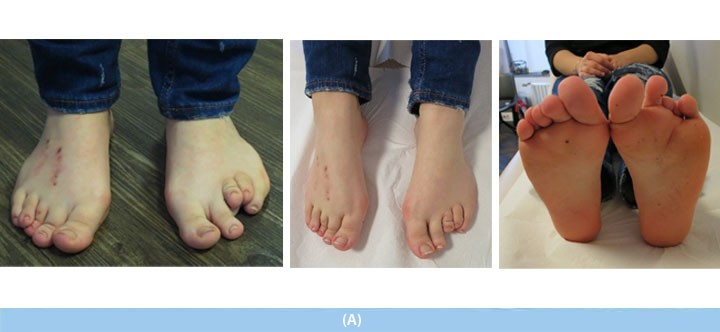
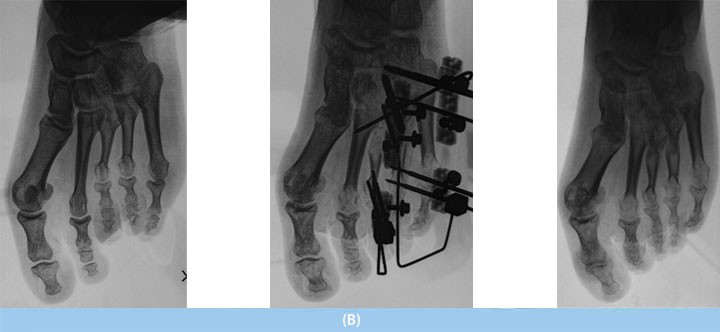
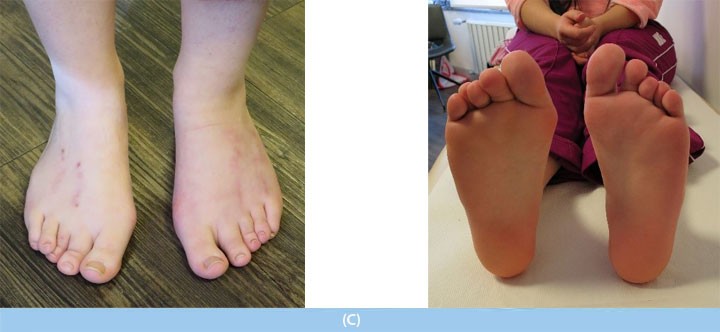
A) One year before the toe lengthening, the patient had undergone surgery at a different medical center, but the surgery had been unsuccessful; there was insufficient fusing of the bone on the right side and there was deformity in several of the toes (age 16). Due to the length discrepancy of the 3rd and 4th toes on the left foot, the toes were protruding on the foot, which caused problems with wearing shoes in addition to cosmetic issues.
B) During treatment for the left foot, X-rays were taken both during and after treatment.
C) The 3rd and 4th toes were lengthened as part of a 3-month treatment. Looking at the foot from both the front and below, it appears that all the toes are even. She can now comfortably wear any type of shoe. The treatment was done during summer vacation to not interfere with the school year.
How are arm length discrepancies treated?
Kollardaki kısalık aşırı olmadıkça belirgin fonksiyonel problemlere yol açmaz. Kısalık fazla ise veya aynı zamanda omurga sorunlarına bağlı belde sertlik var ise kişi masadan uzanıp bir şeyi alma gibi veya kişisel ihtiyaçlarını gidermede sorunlar yaşayabilir. Genellikle kısalık 5 cm’ yi geçiyorsa veya akondroplazi gibi doğumsal hastalıklara bağlı olarak ileri derece ise uzatma söz konusudur.
How is it treated?
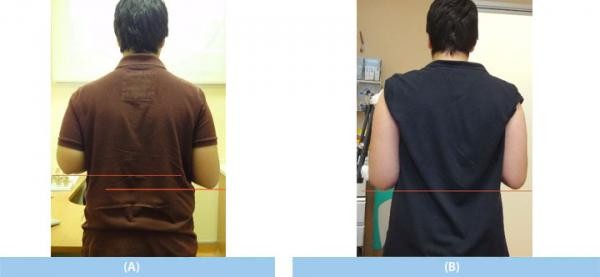
Through lengthening, an equal length of both arms can be achieved. Very positive results can be achieved, both functionally and cosmetically.
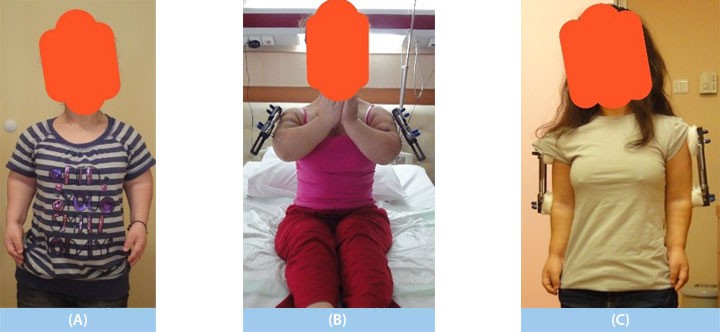
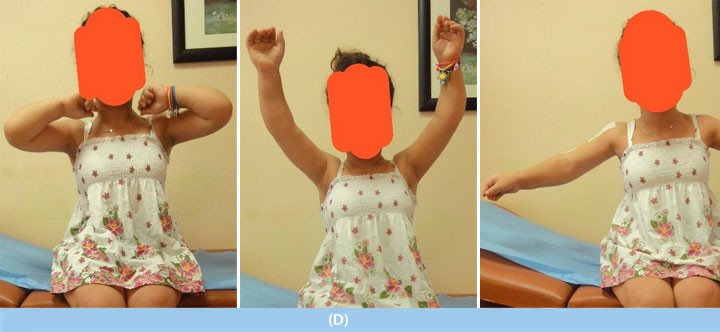
Short stature and length discrepancy in the arm were caused by achondroplasia (age 16). The legs had been lengthened 20 cm before. Treatment for the length discrepancy in the arms was started later. Generally a unilateral external fixator is used for the treatment. During this period, the patient can eat food, read books and take care of other daily needs.
A) Before the treatment,
B) After surgery,
C) During the lengthening treatment, and
D) at the end of the treatment, a 12 cm arm (humerus) lengthening is achieved and full function of the arms can be seen.
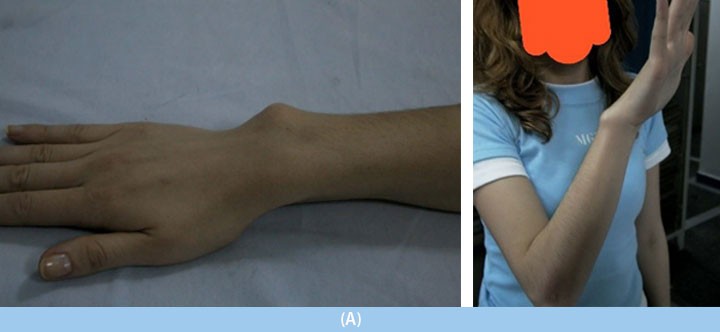
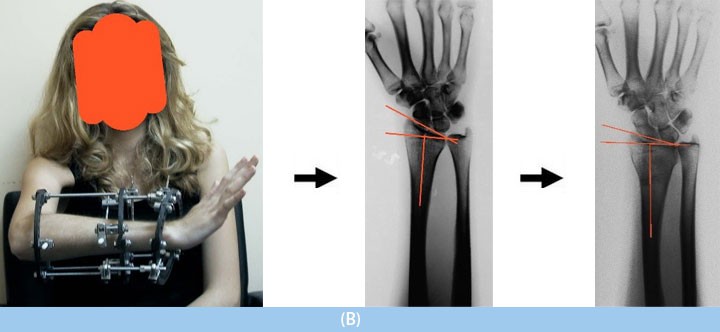
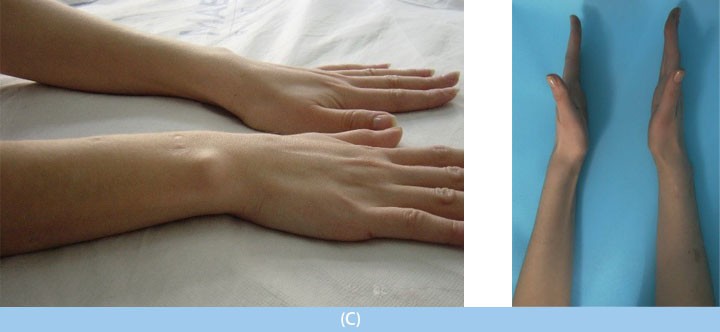
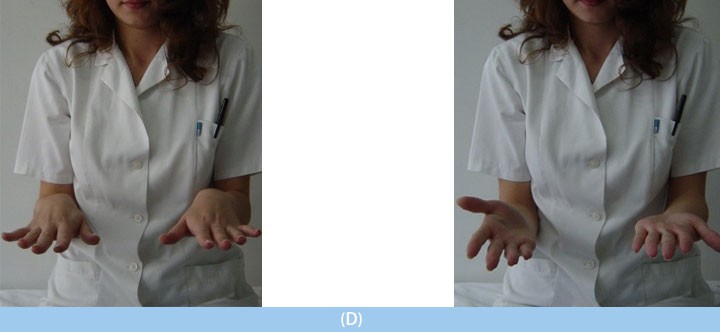
"Madelung's disease"or length discrepancy in one of the forearm bones following a fracture may lead to limited wrist movement or other losses in function of the arm.
A) Beyond being dissatisifed with the apperance, the patient (age 24) had been experiencing wrist pain during daily function and while driving.
B) Because of the Madelung's disease, there was a length discrepancy as well as angular gaps in the radial bone, and this led to a discrepancy in the wrist joint. The Ilizarov external fixator was used to lengthen the radius and address the shortness and angular gap. The patient carried out daily activities during the treatment.
C) The patient's previous complaints were gone by the end of the treatment, and
D) functioning of the arm had been corrected.
Leg Length Discrepancy
and Limb Deformities
in Children
Leg Length Discrepancy
and Limb Deformities
in Adults?
Nonunions
and
Osteomyelitis
Achondroplasia
(Nanism)
Cosmetic
Leg Lengthening
How are length
discrepancies in the
toes and arms treated?
Length Extension
Techniques
- Lengthening Nails
- External Fixators
- Combined techniques
